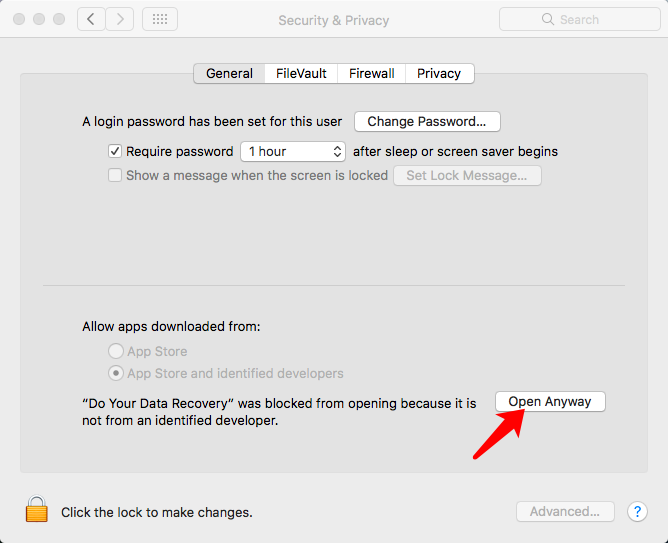When you’ve got loads of files — hundreds or even thousands isn’t unusual after a couple years using the same Mac — it can be difficult to get the correct file path. We attempt to solve this problem in this article for those tired of looking for files and file paths on a Mac.
After trying Spotlight Searches or browsing through files, you might be ready to give up. At times, not knowing the right name can cause software conflicts. But don't despair. There is always a way to locate a file path.
How to get a file path on a Mac?
To get a basic understanding where you file is located, just right click the file.
- Right-click the file
- Click Get Info

Look up what’s written under Where:
Now that you’ve installed BlueStacks, you’re going to head to the “Applications” folder on your Mac. Double-click on the app to open it, and you’ll be asked to create a username and an avatar. The former can be whatever you want, though it can’t be something used by another BlueStacks player. Access the extracted files by clicking the appropriate icons. Alternatively, if the method above does not work, you can right-click on the.zip package, and select Open With Archive Utility (default). Apple and third party software. Apple used to include a program called StuffIt Expander to decompress zipped files, but doesn’t now that OS X lets you unzip files (but not.sit files).
The selected area shows the enclosed folder of your document.
How to copy the file path
Copying any text from the previous window isn’t easy, obviously. But still you need a complete file address that you can copy and paste anywhere. So you do one extra step:
- Click on Finder
- Click View in the upper bar
- Click Show the Path Bar
Interestingly, the file path will immediately appear underneath the Finder window.
- Now, Control + Click the file you want the location for
- Hold the Option key
You will see the new command that has appeared in the context menu — Copy …. as Pathname
- Click on the selected command
You are now ready to paste. This information is pasted into the Clipboard. Make sure to complete pasting/moving it elsewhere, or this will be lost and you will need to find the folder again.
And that is how to get folder path in Mac. Nice and simple.
How to find the file path using Terminal
Also known as a folder path, or directory path, they aren't always easy to find. When every other method has failed, turn to Terminal as your solution.
- Go to Applications > Utilities.
- Launch Terminal.
- Make sure you are using it as a Super User (which means being logged in as an Admin), so type in
sudo su— then press Return. - Now you need to have something of an idea what this file might be called, so once you do, type in the following (the name in the middle is where you’d put a file name):
find / -name randomfilename -print - Give it time to process the query, which could take several minutes.
- A list of names should appear, some or many of which you can ignore as they will be followed by file-end names, such as “operation not permitted”; so focus on the ones that make the most sense, such as:
/Library/Application Support/randomfilename/settings/ - Now copy and past the full name and drop it into Finder or Spotlight Search.
Hopefully, this will bring you to the file you need.
Mac Open File Program
A shortcut to see unlisted (grayed out) files
For those who love Apple, which for many is more than a tech company, it’s a representation of a lifestyle, a brand that has many fans, we’ve got a fun fact for you. Did you know there is a shortcut combination to see hidden files?
This shortcut should work for anyone running macOS Mojave, High Sierra, and Sierra, and anything beyond OS 10.12. Here is how you access the shorcut:
- From Finder, go anywhere where you suspect there are hidden files, such as the the Macintosh HD root directory, or Home folder
- Next, press down the Command + Shift + Period keys, which should toggle to show hidden files in that folder.
- As you press the shortcut the keys are visible: when you switch it off, they dissapear again.
Any hidden files that have been made visible will have greyed out names and icons.
How to find other hidden files on Mac?
It isn't always easy to know where you’ve put every file on your Mac.
After a couple years of constant use, a Mac can start to resemble a cluttered old-school file cabinet. Files in places that once make sense, but are now in the wrong place. Files and folders that should be in the right place, but have been put somewhere else. Files that seemingly don't exist, or are floating around elsewhere.
One solution to this is to download CleanMyMac X. It’s a handy and easy-to-use Mac performance improvement app. It comes with a few tools for finding unlisted, hidden, and large old files that have slipped through the cracks. Here is how you use it:
- Download CleanMyMac X (download a free edition here).
- Click on Space Lens.
These blue bubbles represent all your documents in relation to their size. You can dive into each of these folders to reveal their contents — a more visual alternative to Finder.
You can also use the Large & Old files scanner (in the same app). Either or both features will highlight a few gigabytes worth of space you can free up, uncovering files that can easily slip through the cracks and become forgotten. By the way, CleanMyMac X is notarized by Apple, which means this app is malware-free and safe to use on your Mac.
For those with a lot of files, or Mac users badly in need of making more hard drive space, CleanMyMac X is an invaluable tool. We hope you found this article useful about how to locate and copy the file path details when searching for what you need.
Problem:You need to open an .exe file but you have a Mac®.
Solution:You can easily open an .exe from your Mac by using Parallels Desktop® for Mac.
I frequently get questions like this from Mac users:

My friend asked me to download a file named Paint-tool-sai.exe, but I can’t open it on my Mac. How can I open this file?
From a person who only uses Mac computers and iPads, this is a very reasonable question.
The quick, short answer is, “By itself, the Mac can’t open this file.”
The longer, more positive answer requires a little background.
File Extensions
Both PC and Mac computers use three- or four-letter extensions on file names—the portion of the name after the period—to determine which application can open a file.
You may have noticed that files with extensions “.jpg” or “.jpeg” are opened by the Preview app on the Mac. Those files are images or photos.
Similarly, you may have noticed that files with extensions “.docx” or “.doc” are opened on the Mac by Microsoft Word or TextEdit. Those files are word processing documents.
What you may not have noticed is that Mac applications themselves have an “.app” extension. (See figure 1.)
Figure 1_Applications on the Mac have the file name extension “.app”
When you double click on a file with the “.app” extension on a Mac, the macOS® launches that application. In other words, opening a file with an “.app” extension is really launching that application; the macOS itself opens that file.
With this background, it is understandable that the Mac by itself can’t open an “.exe” file because the .exe extension means that the file is a Windows application. The Windows operating system is needed to open an “.exe” file.
Enter Parallels Desktop
When you have Parallels Desktop and a Windows virtual machine (VM) on your Mac, everything just works when you double click on an “.exe” file. It feels a little bit like magic.
Can't Open Files On Mac
Underneath, here is how the magic works: Parallels Desktop tells the Mac that it can open “.exe” files. So when you double click on that “.exe” file, the macOS® launches Parallels Desktop. This is just like when you double click on a “.jpg” file and the macOS launches Preview, or when you double click on a “.docx” file and the macOS launches Microsoft Word.
When Parallels Desktop is launched because you clicked on an “.exe” file, Parallels Desktop boots your Windows VM and tells Windows that you want this “.exe” file opened. Windows then launches the application for that “.exe” file.
While the quick, short answer to the question at the beginning of this blog post still is, “By itself, the Mac can’t open this file”…
The longer, more positive answer is, “This is a Windows file, so you need Windows to open it. The easiest way to get Windows on your Mac is to get Parallels Desktop and a Windows VM.”
Oh yeah, and if you have Boot Camp® on your Mac, you still won’t be able to double click on that “.exe” file and have it open. The short answer to “Why not?” is because the macOS and Boot Camp can’t talk to each other. The long answer will be the subject of a future blog post.
How To Open A .app File On Mac
Try Parallels Desktop for free for 14 days!